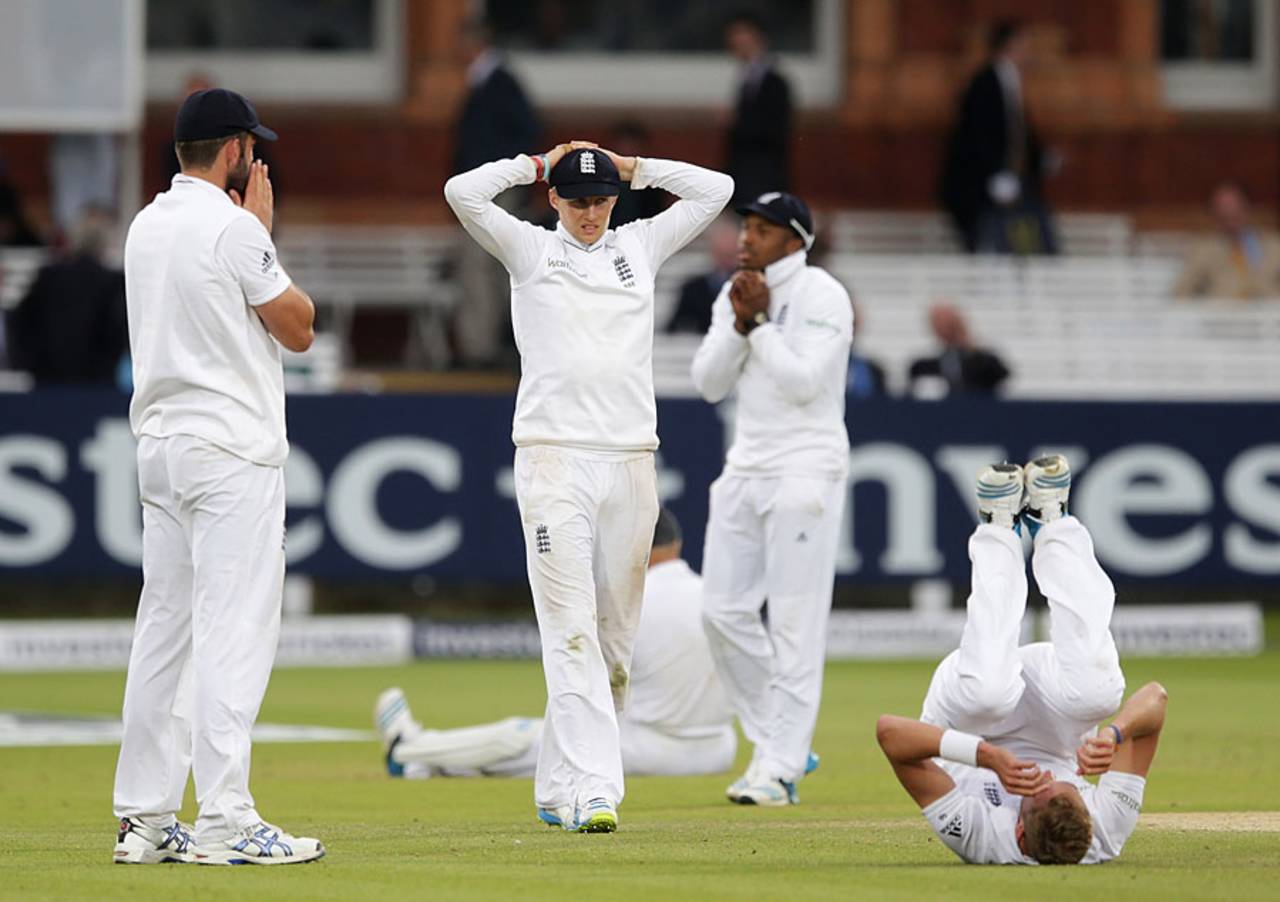Let's hear it for the glorious five-day draw
It helps save the format from extinction
Andrew Hughes
18-Jun-2014

Don't make any sudden movements when approaching these endangered creatures • Getty Images
I think we're all agreed that Test cricket is on the way out. It twitches occasionally, but this is no more than the last spasm of a fly that has banged its head on the cold uncaring window of commercial fate one hundred times in a row and is now expiring on the same dusty window ledge where all dodgy insect-sport metaphors go to die. Test cricket is a goner, and will soon be as extinct as the pterodactyl, monetarism, and the penny-farthing.
Or is it? Fear not, cricket fans, because although the ICC is showing the same urgency in saving Test cricket that the Emperor Nero did upon hearing that there was a conflagration in the Roman precincts, the thrilling inconclusiveness of Monday's play at Lord's showed why the format must endure, and how we can help to save it.
Conventional attempts to save Test cricket have depended on making it more like other sports: gladiator contests where one side is crushed and the other triumphant. A modern audience doesn't insist on literal blood and gore, but they do like to savour the sight of players enduring the agony of defeat, or worse still, the agony of fearing defeat.
Test cricket isn't really like that. It's the sort of fight in which the fallen gladiators can hide behind their shields for four days then walk away feeling pleased with themselves.
Perhaps somewhere in an ECB filing cabinet is a mouldy manila folder containing a hand-written proposal to introduce Test match sudden-death. In the event of a draw in which one team has been losing for four days, upon the bowling of the final ball the players will look to the pavilion balcony where a toga-wearing Michael Atherton will extend a stately arm to determine the their fate. Thumbs up and its handshakes all round. Thumbs down and the dominant side get to beat their opponents to death with the stumps.
Non-cricket folk may deride the phenomenon of the five-day draw, but we should celebrate it. Thanks to the possibility of the futile stalemate, Test cricket is one of few pastimes that can disprove George Orwell's theory about sport being war minus the shooting (the others being professional Hand-Shaking and Association High-Fiving).
Admittedly, to accept this proposition, you have to overlook a few things: Bodyline, Sydney 2008, The Oval 2006, the career of Dennis Lillee, sledging, ball-tampering, jelly beans, Murray Mints, Vaselinegate and so on. But set aside these few isolated dozens of incidents and you will see that Test cricket, thanks to the titanic draw, offers the chance for both sides to leave the dusty/soggy/blood-soaked field of battle with honour intact: five whole days of sport untainted by the tawdry business of defeat.
And to promote this essential joy of Test cricket, we should get all those players who say they are keen to preserve it to contribute a percentage of their IPL wages/supermarket endorsement fees to pay for an advertising campaign:
Poster One: A section of the Bayeaux Tapestry showing William the Conqueror and King Harold sharing a post-battle flagon of mead at the Hastings Arms, with the caption: "Shake Hands on a Draw - Enjoy Test Cricket".
Poster Two: A picture of an MCC member snoozing during the afternoon session at Lord's, his face covered with a newspaper showing stories of death and destruction from around the globe. The poster reads: "Make Draws Not War - Give Tests A Chance".
Poster Three: A photograph of the exhausted players leaving the field after the conclusion of the last timeless Test in Durban in 1939 underneath the heading: "Test Cricket: Ten Days. Sixty Hours. No Losers".
Andrew Hughes is a writer currently based in England. He tweets here